 Your new post is loading...
 Your new post is loading...
Online, your product is unbundled. You get 10 words. Or 8. Or maybe 13, like I used above, to market your work. Digital success is like selling a newspaper story by story rather than day by day or week by week. And in selling that day’s paper, by subscription or newsstand, there’s just less urgency to make the headline awesome on that 150-word story buried at the bottom of page 11. Sections and geographic centers all are comfortable assumptions you can’t make in digital headlines. You must have a certain sense of desperation in writing web headlines, like those eight words are the difference between that column’s or blog’s life or death. Mostly, because it is. You aren’t owed readership. Your headline helps earn it — along with a handful of other factors like author and brand.
So any strategy involving growing and sustaining digital audience must incorporate excellence in headline writing. Must.
A few points to clarify here as we begin. I’ll be discussing writing for readers here, not for search engine optimization. That will be a consideration at times, but mostly we’re talking about people creating headlines for people....
In 1977, according to the AP style guide I still occasionally refer to, using the acronym “TV” as a noun when writing about television was not advised.
“Acceptable as an adjective or in such constructions as cable TV [italics theirs]. But do not normally use as a noun unless part of a quotation,” counsels the item on “TV” in the 1977 edition of the AP Stylebook -- formerly titled “The Associated Press Stylebook and Libel Manual.”
Today we use “TV” and “television” more or less interchangeably as nouns, although the former is probably used more now than the latter. One thing the 1977 Stylebook reveals, however, is that “media” -- whether electronic or otherwise -- was not nearly the obsession for news organizations that it is today.
Part of the reason was that the world at large was not nearly as obsessed with media and technology -- and the companies responsible for them -- as we are now. There was so much less of it then too, obviously....
When you’re planning to write, but before you’re actually writing, you create an outline. Unfortunately, most outlines are worthless. You need a better outline: a fat outline.
Outlines are helpful for mapping out the structure of a long piece of writing — anything more than 1,000 words (a couple of pages). An outline ought to help the people you’re working with — your boss, your clients, your editor — to understand what you’re going to write. It should also force you, the writer, to think clearly about content.
The problem is, traditional outlines don’t do this very well.
Who fancies a game of Buzzword Bingo? Here are five words to get you started that I’ve noticed being used with increasing regularity inside communications agencies and at industry conferences…
Did you know writing affects your brain in a way similar to meditation?
When you write, your breathing slows and you enter a "zone," which allows your words to flow more freely, an infographic from BestInfographics.co says.
The infographic illustrates how writing affects the brain, and shares other interesting facts, like why stories are so memorable and clichés are not. Here are a few takeaways:...
The infamously expletive-wielding Carlin could be the NSFW poster child. So does that make him the worst possible role model in this situation. Before you decide, consider the phrase he invented...soft language.
"American English is loaded with euphemisms -- because Americans have a lot of trouble dealing with reality. So they invent a kind of to protect themselves from it. And it gets worse with every generation."
To explain soft language, Carlin details the evolution of the term shell shock - in a way only he can...
If you run a media company (and you do--you publish regularly on all sorts of social media, don't you?) then it's worth two minutes to consider some basic ground rules, listed here for you to embrace or reject: Establish your standards...
While the inverted pyramid has been the tried and true structure for news articles, it may not be the best for your marketing content. Here's why....I had a realization … I have never written a blog post in the style of the inverted pyramid. Does that make me a bad writer or bad marketer? Or is the inverted pyramid format an outdated storytelling format for business bloggers and marketing content creators today?To tackle this dilemma, I did some digging, and here’s what I found. Before we start accusing writing formats of being entirely right or wrong, let’s take a look at the history of the inverted pyramid....
...One has to look no further than the pages of a USA Today to see just how the charticle has taken its rightful place as a journalistic vehicle for today’s time and attention-starved news consumers. A few minutes with quick visual coupled with scannable text and we know just about everything going on in the world.In fact, some writing sites even advise would-be writers to skip the feature article and submit a quick-impact charticle for consideration.
What is a Charticle?
Charticles – as defined by Omaha World-Herald Deputy Presentation Editor Josh Crutchmer – are combinations of text, images and graphics that take the place of a full article. They are often used by bloggers and journalists alike to express one big idea with a bit of narrative provided by the supporting text that follows or sets up the big visual or chart that’s usually the feature in the post. In many cases, the chart featured in the charticle could likely stand on its own, as in, the data is typically that compelling. Moreover, that’s also what makes it worth writing about. The charticle is singular in focus and offers a great opportunity for expressing a succinct thought leadership point of view on a relevant bit of data....
I’m working on the followup to Steal Like An Artist, my book about how to be more creative in the digital age. It’s been a real pain in the ass. Here are five things that have helped: 1. Shut up and write the book.
In business, there is no such thing as writer’s block. It doesn’t exist. Erase the phrase from your mind. You see, in any business, there are so many potential stories to be told that one should never run out of them even if they’re blogging daily. More importantly, this isn’t like writing a novel. It’s not professional journalism. You’re not writing a column. On a business blog, you have the freedom to pull from the ultimate content resource – the internet. What most perceive as writer’s block in the world of business blogging is actually the brain’s way of saying that you don’t want to write at this moment. Get over it. With that all out of the way, it’s time to look at some different types of blog posts that can be categorized into a proper plan. This plan can be an editorial calendar, a series of reminders in Outlook, or a notepad on your desk where you jot down your ideas. We’ll get into planning in a moment, but first let’s look at some of the ideas themselves.,,,
The web was dominated for a decade by two key elements. Search engines and content. Then social media turned up. Content creation on a smarter and social web requires intelligent and creative thinking. ..Google will always have good user experience as their primary goal, and each update they make will be in the direction of better understanding of the content from a human perspective. If you guide your copywriting to provide what your readers look for, not only that you’ll get more loyal audience that loves to come to your website and read what’s new, but Google will also award your actions with a higher ranking in their search result pages. So how should you write? Here’s what you should ask yourself before you publish your writing on the Internet...
If you don’t know who you’re talking to, then how do you know what to say? Even though you already know who your target market is (oh, God, I certainly hope you do), did you know you are still writing for three distinct audiences? What I’d like to do today is explain these three audiences to you and give you tips for how to write for each one. That way, your blog posts will reach the right people and have a greater impact on them (and on your bottom line)....
|
Google has agreed to fund a project to develop automated fact checking tools amid anger over the prevalent of fake news websites during the US presidential election.
UK fact checking organisation, FullFact, has announced it has been awarded €50,000 (£43,000) by the tech giant’s Digital News Initiative to build the first “fully automated end-to-end fact checking system”.
In a statement, FullFact explained that the system will have two main features.
One will inform readers if something reported as fact has already been proven inaccurate.
The other mode will fact check claims automatically using Natural Language Processing and statistical analysis in real-time – something FullFact said has never been done before – by highlighting the text and having a factbox appear when the user hovers over it....
The fantasy world of merger announcements bears no resemblance to the reality of mergers. Michael Dell’s post about the Dell-EMC merger is a fine example.
Why do companies merge? There’s always language about “complementary skills and assets,” but that’s always bullshit. There is always language about “serving customers better” but that is also bullshit.
Companies merge for growth — period. It’s not about customers. It’s about money.There are two basic merger scripts, none of which you will ever read, and both of which are bad for customers....
Although the Oxford English Dictionary editors get the final say, they actually look to us to dictate whether a word should be added. In other words, we have no one but ourselves to blame for all the weird words that make the cut every year.
But we can at least share the blame with technology. None of us would be saying "srsly" if we hadn't felt the urge to shorten words for text messages and emails. We wouldn't be voting anyone off the island if not for the television series Survivor. And, perhaps most importantly, there would be no need for the word "meatspace" without the existence of the virtual world. (One could argue there is still no need.)
Want to see what weird words were added to the OED thanks to internet slang and technology? Read on....
A number of famous novelists spent time in ad jobs—among them, F. Scott Fitzgerald (who worked at Barron Collier in New York, where he wrote the line, "We keep you clean in Muscatine"), Joseph Heller (once a copywriter for Merrill Anderson in New York) and Salman Rushdie (who logged seven years at Ogilvy London, after failing an interview test at J. Walter Thompson that supposedly included making up a jingle about seatbelts).
Those three authors are the subject of these amusing ads—showing client feedback on their famous novels—to promote a British fiction contest for advertising writers. "Write for yourself. Not for a client," say the ads.
Entries are closed for the 2015 Winston Fletcher Fiction Prize, unfortunately, but it is an annual thing. (You have to work in advertising, marketing or a related business to enter.) Check out the full ads below....
It’s all around us. We’re bombarded by content advice porn from the “experts.” It’s irresistible but like most instant gratification, it’s short-lived.
Content is king. Make your copy bite-size and scannable. Run it through your Buzzfeed detector.
Oh, and add visuals. They increase readership and response noticeably. After all, aren’t Pinterest and Instagram the next big thing?
While you’re at it, let’s produce some video. Got six seconds? Here’s a Vine. Need 15 seconds for your video? Instagram has you covered. Producing an epic? YouTube it...
If you're in the market for a free journalism education, hundreds of training materials are now at your disposal.If you're in the market for a free journalism education, hundreds of training materials are now at your disposal.
The BBC's College of Journalism made a slew of videos and guides - initially created to train its own journalists - available to reporters worldwide for free.You can watch videos and tutorials made by BBC journalists in the field on journalists' safety, social media, multimedia techniques, as well as subject and writing style guides galore. Check out the whole library here....
The author of horror classics like The Shining and its 2013 sequel Doctor Sleep says the best writers hook their readers with voice, not just action....
Stephen King: There are all sorts of theories and ideas about what constitutes a good opening line. It's tricky thing, and tough to talk about because I don't think conceptually while I work on a first draft -- I just write. To get scientific about it is a little like trying to catch moonbeams in a jar.
But there's one thing I'm sure about. An opening line should invite the reader to begin the story. It should say: Listen. Come in here. You want to know about this.
How can a writer extend an appealing invitation -- one that's difficult, even, to refuse?We've all heard the advice writing teachers give: Open a book in the middle of a dramatic or compelling situation, because right away you engage the reader's interest. This is what we call a "hook," and it's true, to a point. This sentence from James M. Cain's The Postman Always Rings Twice certainly plunges you into a specific time and place, just as something is happening:
"They threw me off the hay truck about noon."...
Do you want to learn how to increase blog traffic?
It’s easy—use these five simple steps each month to grow your blog to new heights.
Recommended reading for all bloggers...
Improve your text instantly with this simple rule: Eliminate “to be” and all forms of -ing. Your sentences will gain purpose and strength as you articulate exactlywho does what. You will no longer lope along with constructions that posit a vague notion of activity—someone is going to be doing something—instead you will claim the subjects and their predicates with equal enthusiasm.
My novel shot to the top of the site's bestseller list last summer. You won't believe how little I got paid... This past summer, my novel, “Broken Piano for President,” shot to the top of the best-seller lists for a week. After Jack Daniel’s sent me a ridiculously polite cease and desist letter, the story went viral and was featured in places like Forbes, Time magazine and NPR’s Weekend Edition. The New Yorker wrote one whole, entire, punctuated-and-everything sentence about me! My book was the No. 6 bestselling title in America for a while, right behind all the different “50 Shades of Grey” and “Gone Girl.” It was selling more copies than “Hunger Games” and “Bossypants.” So, I can sort of see why people thought I was going to start wearing monogrammed silk pajamas and smoking a pipe. But the truth is, there’s a reason most well-known writers still teach English. There’s a reason most authors drive dented cars. There’s a reason most writers have bad teeth. It’s not because we’ve chosen a life of poverty. It’s that poverty has chosen our profession. Even when there’s money in writing, there’s not much money....
You'll never believe Peter Koechley's OUTRAGEOUS headline writing tips. For most of us in the online journalism business, writing headlines basically amounts to guesswork. Will people click on this? Are there enough nouns in here for Google to find it? Does this line break look weird? Should I use a question mark? An exclamation point? For Upworthy, it’s more akin to a science — and not one of those mushy sciences like anthropology or psychology, either. We’re talking straight-up particle physics. For every article they publish, its writers come up with 25 headline options. They then A/B test the four most promising before settling on a winner. The result: In just 11 months, with a smallish staff and not much original content, Upworthy has built a sizable audience (8.7 million monthly unique visitors as of last November) for its socially progressive message, plus a Facebook following of more than 1 million fans....
The obstacles to being creative inside an organization are many, varied and tough to overcome … but it all starts with taming the approval process.
Writing for organizations is hard. Being creative inside organizations isn’t easy. Sometimes, it seems as if everything is set up to prevent us from creating the kind of content that people will actually read and pay attention to. A recent informal survey of communicators at one of my writing seminars revealed six common barriers that people face as they labor to create better content. In no particular order, here they are:...
|



 Your new post is loading...
Your new post is loading...

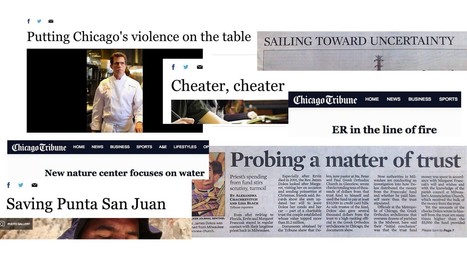




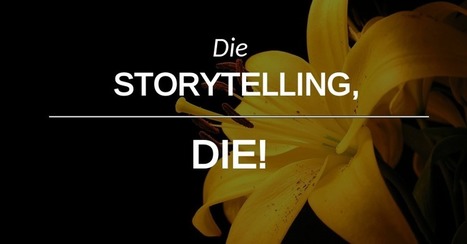
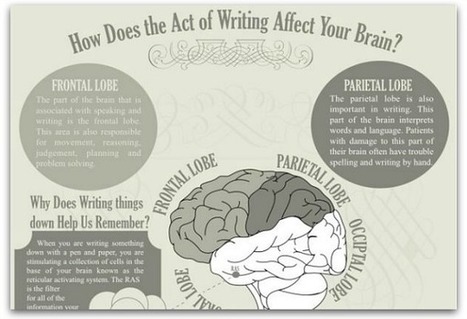











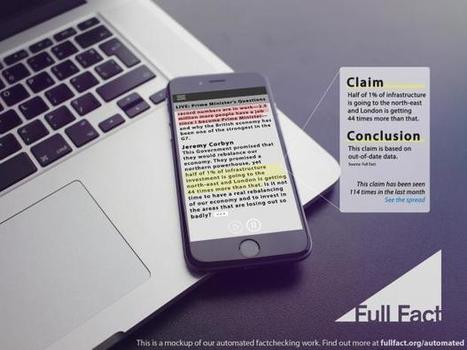




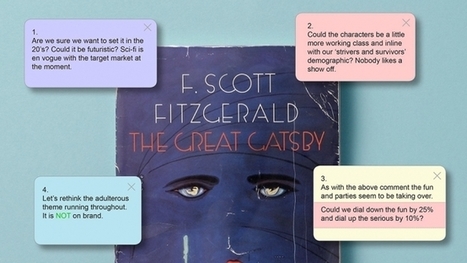
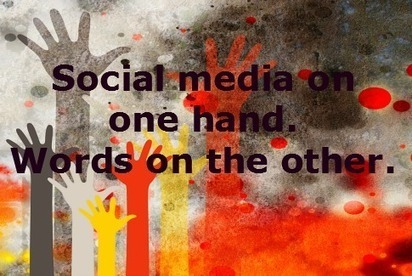

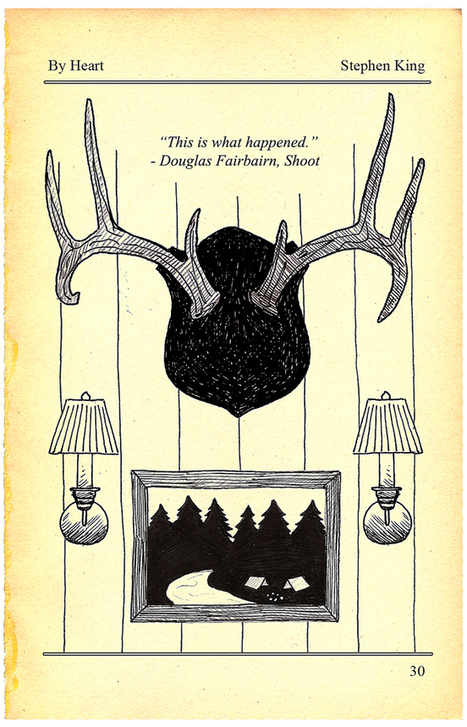
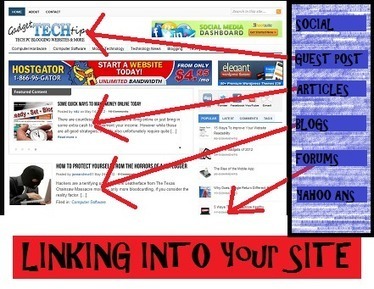










Chicago Tribune's deputy digital news editor Kurt Gessler will wow you with his writing tips. His headline makeovers are superb. Highly recommended for all writers. 10/10